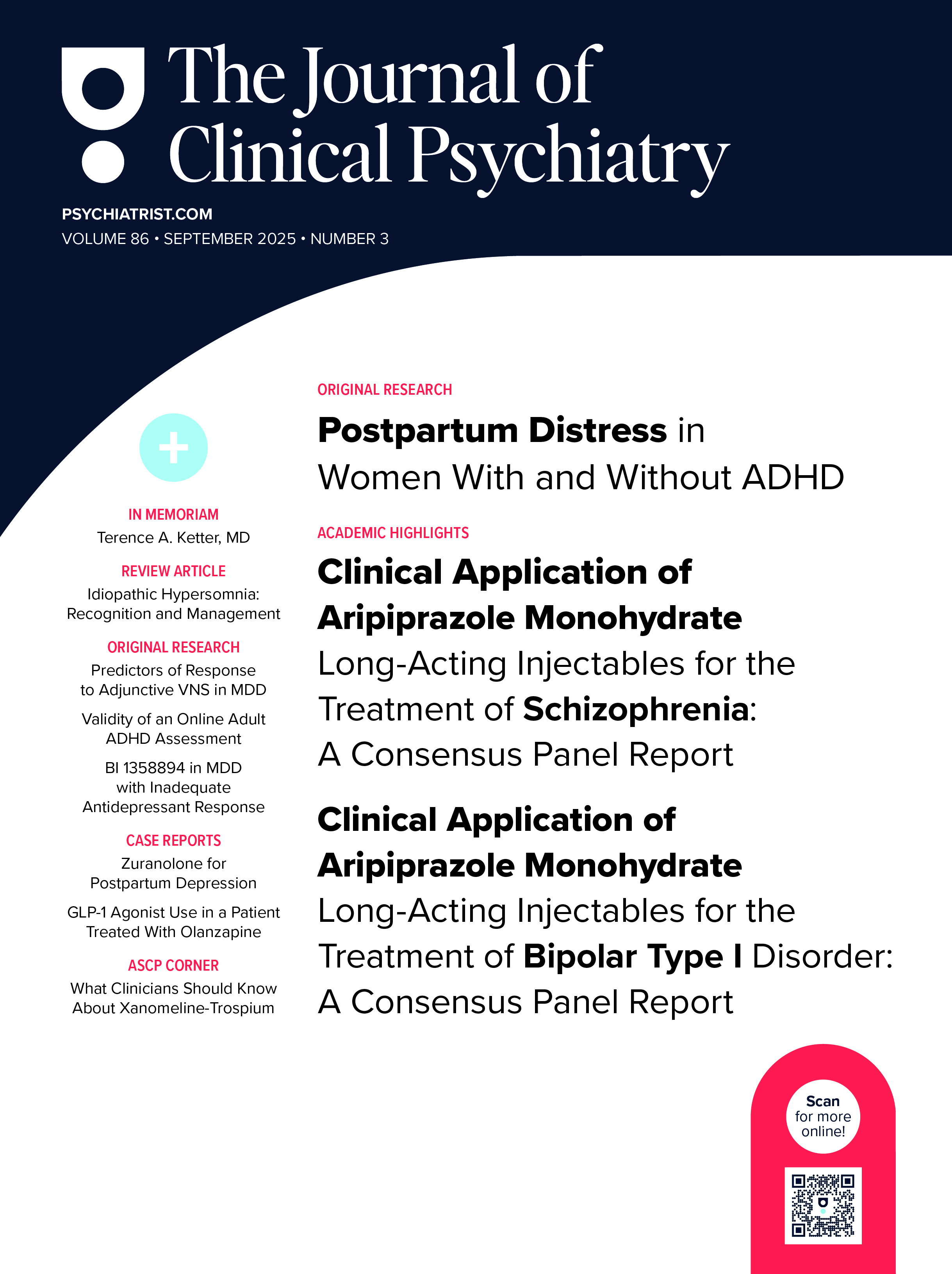Objective: Despite the lack of clear guidelines, neuroimaging (computed tomography [CT] or magnetic resonance imaging [MRI]) is frequently performed in subjects presenting with first-episode psychosis (FEP). The objective of this study was to determine if the use of neuroimaging adds diagnostic yield in adolescents and young adults presenting with FEP.
Methods: The sample consisted of 443 subjects aged 15-24 with FEP (DSM-IV-TR and DSM-5) and no focal neurologic findings. Consecutive charts from January 1, 1998, to June 30, 2016, were reviewed retrospectively. A positive finding was defined as a result leading to urgent follow-up or intervention.
Results: Twenty-five (5.6%) of 443 subjects showed incidental findings unrelated to psychosis. The prevalence of positive findings from neuroimaging was 0%, indicating no diagnostic yield from neuroimaging.
Conclusions: Routine neuroimaging did not provide diagnostic information leading to a change in clinical management and should not be recommended in the investigation of FEP.
Members Only Content
This full article is available exclusively to Professional tier members. Subscribe now to unlock the HTML version and gain unlimited access to our entire library plus all PDFs. If you’re already a subscriber, please log in below to continue reading.
Please sign in or purchase this PDF for $40.00.
Already a member? Login




